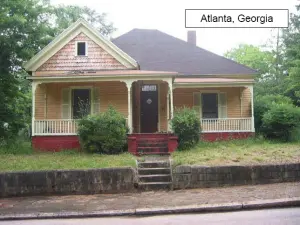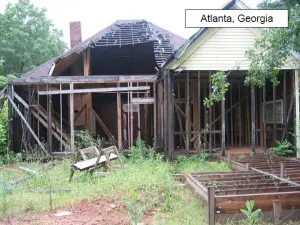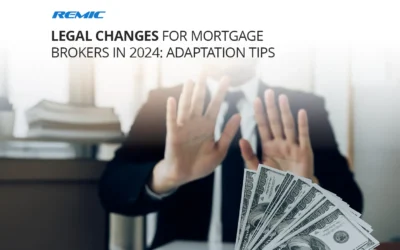Property Value Fraud
The Appraisal
Property value fraud can occur when criminals, in association with a dishonest appraiser, may have a property appraised at a higher value than it is worth. The criminal will then obtain a mortgage based on the inflated value and abscond with the money. This results in the lender taking possession of a property that must be sold at a significantly lower amount.
In Atlanta, Georgia an entire neighbourhood was compromised. Fifty-six properties were purchased using straw borrowers and fraudulent appraisals within roughly the same period. None of the mortgage payments were made.
This type of criminal activity can have a devastating effect on a market. Have a look at the image to the right. Dark balloons indicate mortgages at least 90 days in arrears, while the lighter balloons are 60 days in arrears and the lightest balloons are 30 days in arrears. White balloons are currently up to date.

Mortgage Fraud and its Effects on a Neighbourhood
Evaulation
Property value fraud is also perpetrated by fraudsters who know the circumstances in which lenders will only rely on automated valuation models (AVMs) to determine the market value of a property and will not physically verify the condition of the property. These situations can arise when the fraudster impersonates an individual with good credit, knowing that the lender will use an AVM since the covenant is considered low risk. The fraudster provides details on the property that are consistent with other homes in the neighbourhood and the AVM provides a value based on that information.
After the transaction closes the fraudster makes several payments and then stops. The lender then begins the power of sale process and has a full appraisal completed. Unfortunately for the lender the full appraisal paints a very different picture of the property. The following figure, a frontal view of this property is very different from the rear view, as illustrated in the second figure. In this example the property was sold for a significant loss to the lender.

Front of house

Back of house
Purchaser and Vendor
Another form of property value fraud involves collusion between the purchaser and the vendor where the sale price is inflated. For example, a purchaser applies for a 95% LTV mortgage to
purchase a house selling for $400,000. In reality the house is being sold to the purchaser for $300,000. The result is that the vendor receives $300,000 and the purchaser gets a mortgage for $380,000, making an $80,000 profit off the purchase. The purchaser does not make any mortgage payments, or defaults after making a few payments and absconds with the proceeds.



